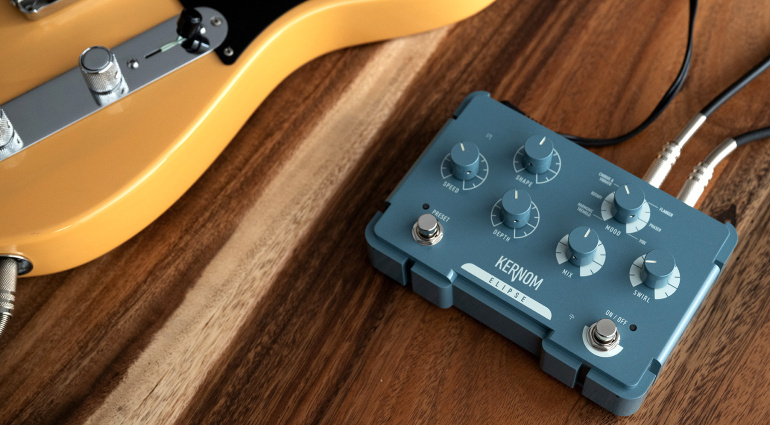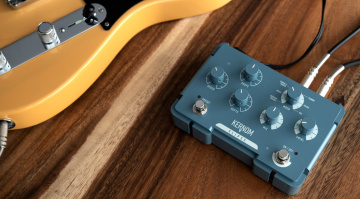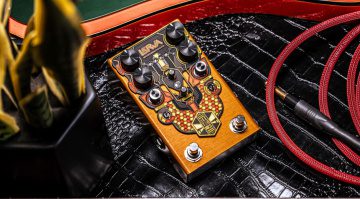Kernom Elipse: Endless Analog Vibes meet Digital Functionality
Chorus, Flanger, and more!

After the Ridge and the Moho, the Kernom Elipse is the first pedal from the French manufacturer to offer chorus, flanger, and more. Like the overdrive and fuzz pedals, the modulation pedal is a bit different than your usual modulation pedal. And it sounds great, too.
Kernom Elipse: Analog Morphing Core
The Kernom Elipse includes six modulation effects: harmonic tremolo, rotary, chorus and vibrato, flanger, phaser, and vibe (a phaser effect specially developed by Kernon). What’s cool is that you can seamlessly switch between these effects using the mood controller!
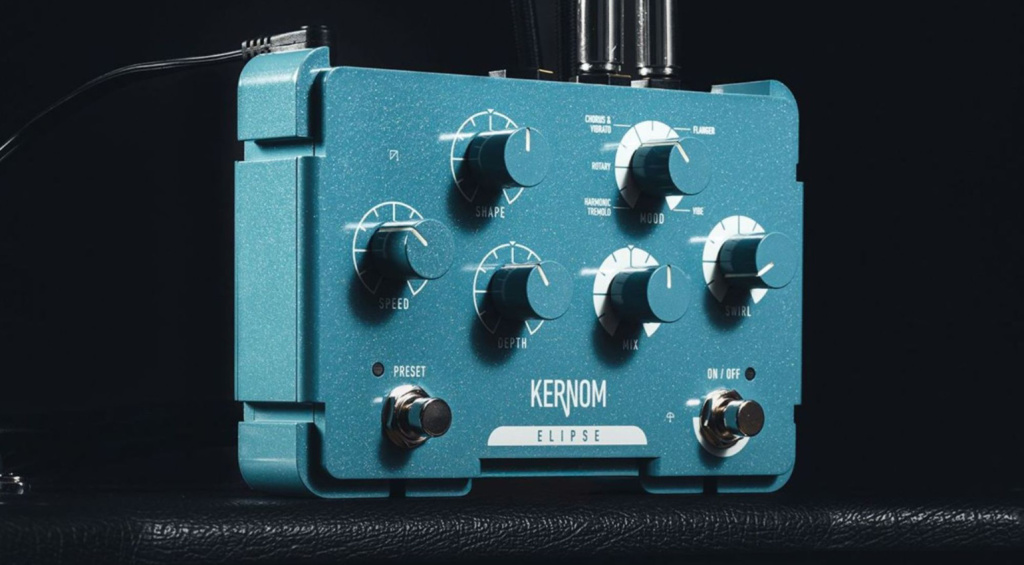
Looking for a mighty harmonic tremolo with a touch of rotary? The best of chorus and flanger? The spiciest phaser effect ever? No problem with the Elipse! Kernom calls this technology Analogue Morphing Core. And with the Swirl parameter, you can take it up a notch.
With it, you can add a second effect for even more vibes. From zero to about twelve ‘o’clock, Swirl gives you a second, slow-running phaser that blurs your signal even more beautifully. In the second half, phaser increasingly turns into a drive effect. And that overdrive has quite the punch, judging by the demos.
Modulation Madness
The Kernum Elipse offers quite a few parameters for fine-tuning the six modulation effects. Use Speed to adjust the modulation speed and the mix dial to adjust the overall effects level. It’s worth noting that the parameter has a double function for harmonic tremolo and chorus/vibrato.
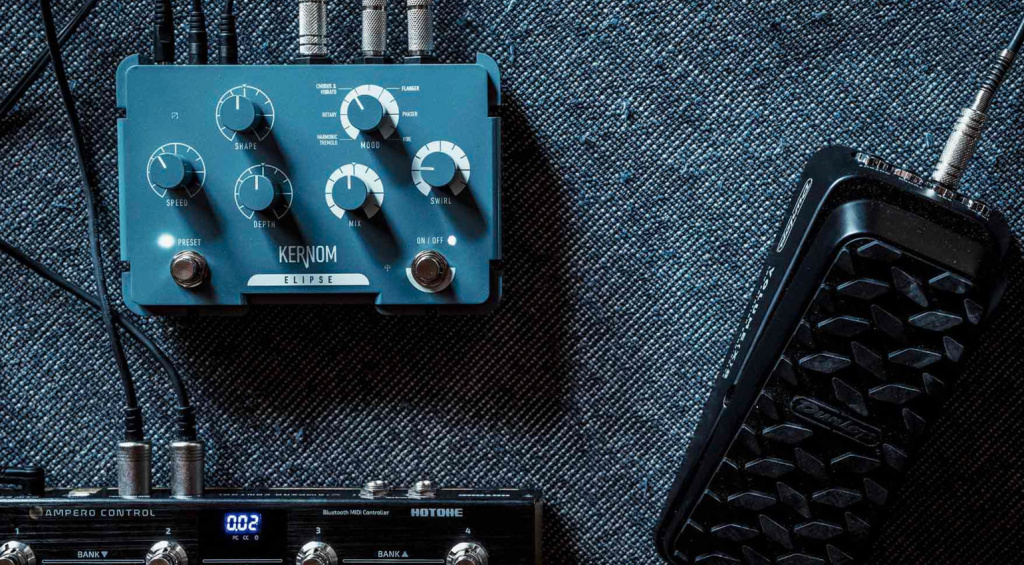
If the dial is set to noon when you’ve engaged the harmonic tremolo effect, a harmonic tremolo is created, i.e., mainly the high frequencies are being amplitude-modulated. If you turn the controller up all the way, the effect turns into a full tremolo. A similar principle applies when you have selected the chorus/vibrato effect: chorus at noon, vibrato turned up all the way.
You can further change the modulation’s character with the Shape dial, which changes the LFO’s waveform. At 12 o’clock, you get the classic triangle wave, with a hint of sine wave. When turned all the way to the left, the modulation’s movement becomes more jagged. In comparison, when dialed all the way to the right, it becomes smoother. With the Depth parameter, you can adjust the intensity of the selected effect, from gently meandering lo-fi vibes to brutal sound blurring.
Connectivity and MIDI Functionality
The Kernom Elipse can store up to 128 presets, which can be accessed via MIDI-IN. Synchronization and parameter control via MIDI CC are also possible via the MIDI input (mini-jack). A MIDI out is also available, which can be used to synchronize additional pedals in MIDI-Thru mode. In MIDI out mode, each of the six dials can be used to send MIDI CC signals.
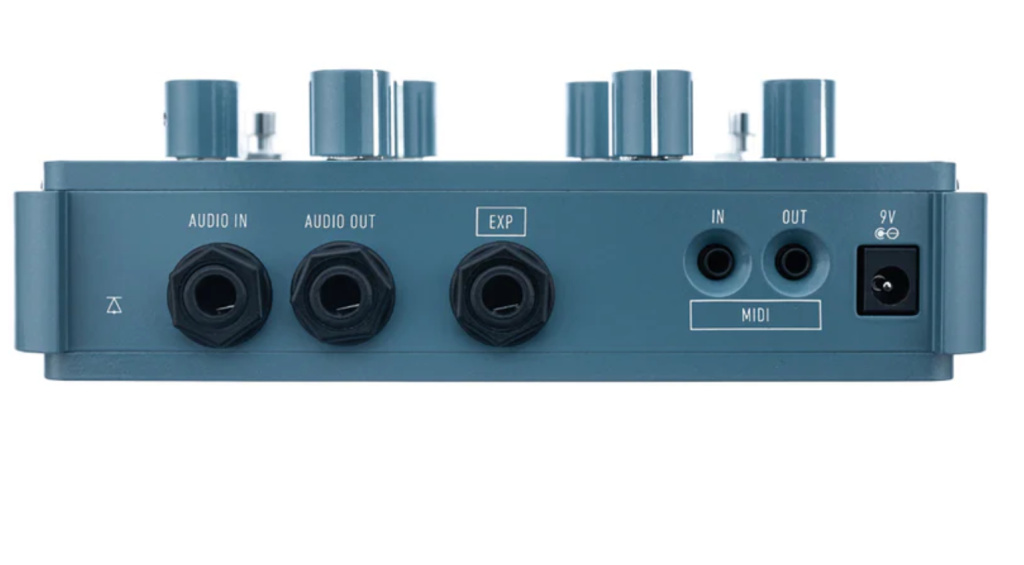
If MIDI isn’t your thing, you can still switch between two presets using the second foot switch. Furthermore, all parameters can also be controlled using an expression pedal via the corresponding input.
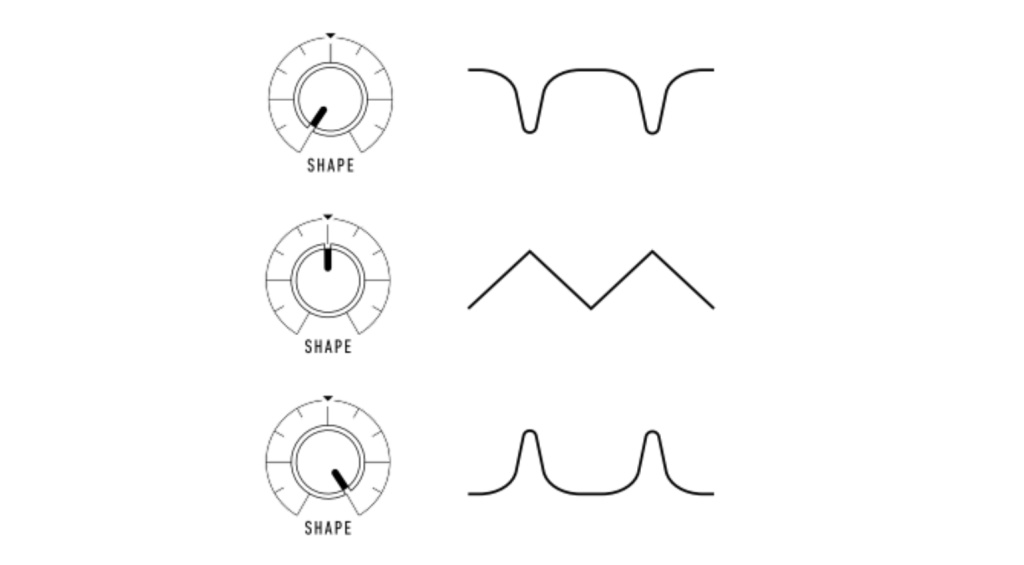
I am a little surprised that the signal flow is completely mono. It’s not a deal breaker, but stereo has become so common in pedals, especially modulation, delay, and reverb, even in the lower price range, that a version 2 of the Elipse or a dedicatd stereo version is what I really want.
How much does the Kernom Elipse cost?
The Kernom Elipse is available from Thomann* for 369 euros starting January 23, 2025. It might not come with a stereo signal flow, but in terms of sound quality, looks, and modulation options, this is one of the most exciting modulation pedals in a while.

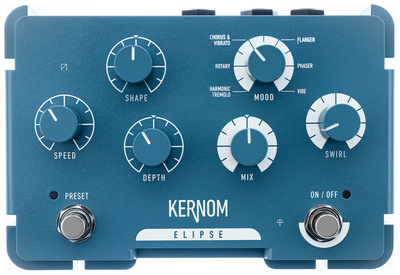
More on the New Pedal from Kernom
*Disclaimer: This post contains affiliate links and/or widgets. When you buy a product via our affiliate partner, we receive a small commission that helps support what we do. Don’t worry, you pay the same price. Thanks for your support!

 4,8 / 5,0 |
4,8 / 5,0 | 